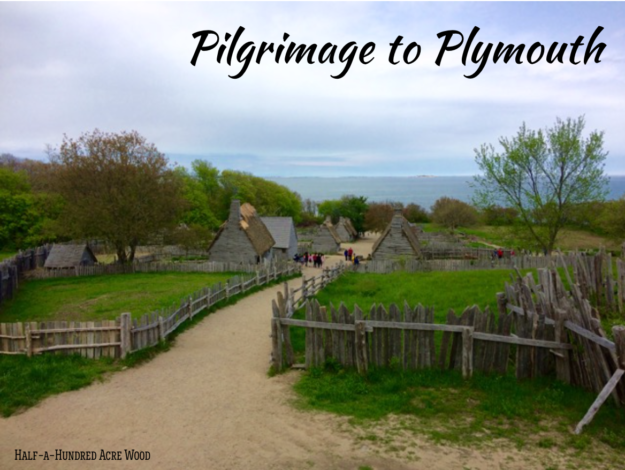
Ay, call it holy ground,
The soil where first they trod:
They have left unstained what there they found,
Freedom to worship God.
– final stanza from “Landing of the Pilgrim Fathers” by Felicia Dorothea Hemans
There are moments in my life when a veil is lifted as I learn a nugget of truth that shakes my previous knowledge and understanding to the core. Our visit to Plymouth, Massachusetts placed me in the midst of one of those moments. In this historical setting, I stood there thinking, Of the history I learned as a student, how much was either misunderstood by me – or falsely communicated to me? It’s bewildering and thought-provoking and incredibly exciting all at the same time.
Realizing that some may never be able to make this trip, we wanted to share the blessing of virtually visiting Plymouth with others. After all, it’s the site of a famous rock, a forgotten monument, and a living history museum where you can sing “Peace be in Zion” with Myles Standish.
Plimouth Plantation
We begin our tour with Plimouth Plantation, a fully functioning 17th-Century English village modeled after the colonial community built by the Pilgrims on the shore of Plymouth Harbor. As the townspeople go about their daily lives, they engage the passers-by (like us) in conversation and chores…
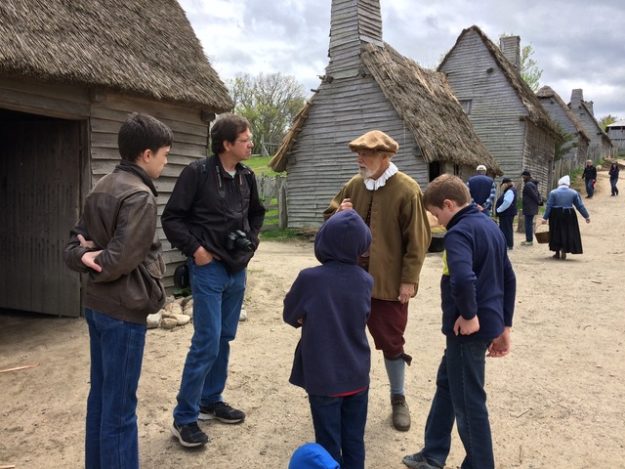
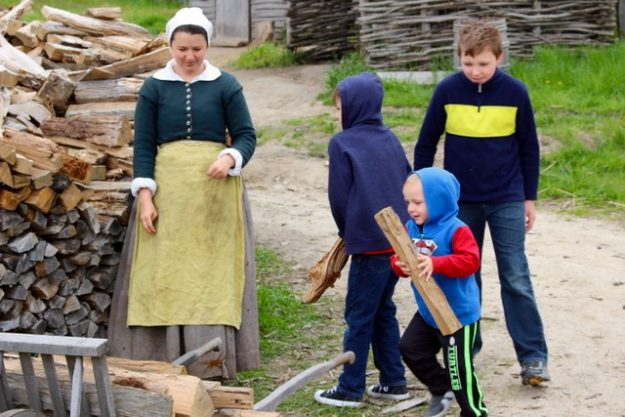
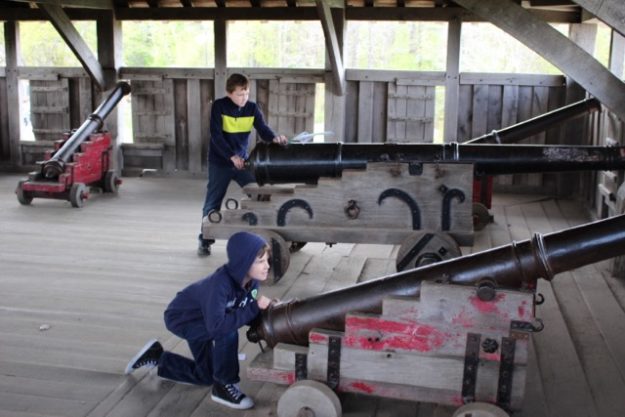
In this immersive history experience, the costumed role-players of Plimouth Plantation have become real historical residents of Plymouth Colony, adopting the names, opinions, and histories of the people who lived and worked there. On site, the townspeople are never out of character, so it really feels like you have traveled back in time to see not only how they live and interact with other colonists but also to hear direct, first-person accounts of their religious beliefs, their daily chores, their family values, their historical journey, or their interaction with Native People. While we were there, we also spoke with Museum Guides who provided answers to modern questions. (If you ask a modern question to the colonial folk, they will respond with a confused look and – in some cases – will give you some of the oddest answers!)
At a special craft center (set apart from the village), artisans use the tools, materials, and techniques to re-create items that were made by English colonists and Native People. (We could have stayed and watched the artisans for hours!) The Nye Barn houses rare and historic breeds of livestock that were among the types of animals raised in Plymouth Colony. And the Plimoth Grist Mill includes an interactive exhibit gallery where you can learn about the process of grinding corn into cornmeal.
Also at Plimouth Plantation is the 17th-century Wampanoag Homesite, where you will encounter Native People (who are not role players) dressed in historically accurate clothing. Because they are not role players, they answer questions about history, traditions, stories, food, chores, pasttimes, and more – all from a modern perspective. (Historically, the Plymouth colony established their town where a group of Wampanoag People had lived before, but a sickness had killed most of them.)
At the riverside, we witnessed a Wampanoag man making a mishoon (boat).
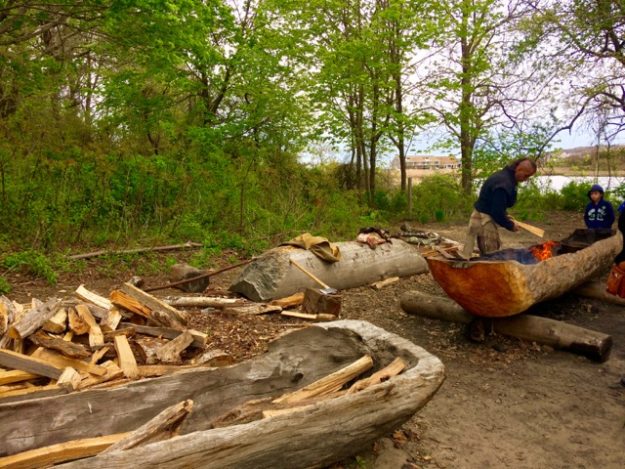
We asked questions about making food…
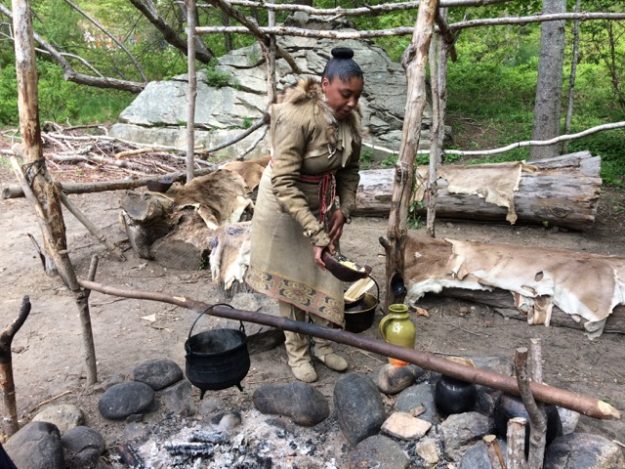
…and about their homes (a wetu or nush wetu).
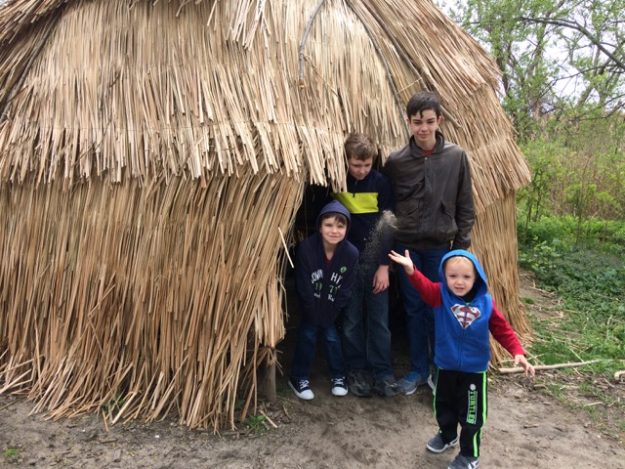
Also usually located at Plymouth Harbor is the Mayflower II, a full-scale reproduction of the ship that brought the Pilgrims to Plymouth in 1620. It’s currently in the midst of a full restoration in Mystic Seaport, CT, in preparation for the upcoming 400th year commemoration of the Pilgrims’ arrival. Learn more with this engaging and informative narrative about the voyage, the Mayflower, and the Mayflower Compact. (A great presentation topic!)
History resources to learn more about Plymouth Colony:
The Mayflower and the Mayflower Compact
The Mayflower Compact in Bradford’s Hand [PDF]
Virtual Field Trip for Kids
Recipes and Riddles
Talk Like a Pilgrim!
Historical Essays for Kids (Great info to prepare a presentation about Plymouth Colony!)
Plymouth Rock
Here it is. The rock that was moved, dropped, broken, moved again, and cemented back together before becoming enshrined in a monument, all because the Pilgrims might have stepped onto it when they arrived in America.
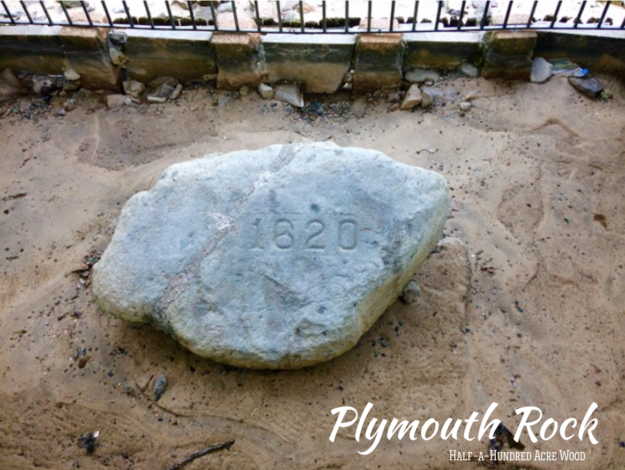
The most notable thing about Plymouth Rock (besides the 1620 engraving) is the size. Check it out.
Great big monument.
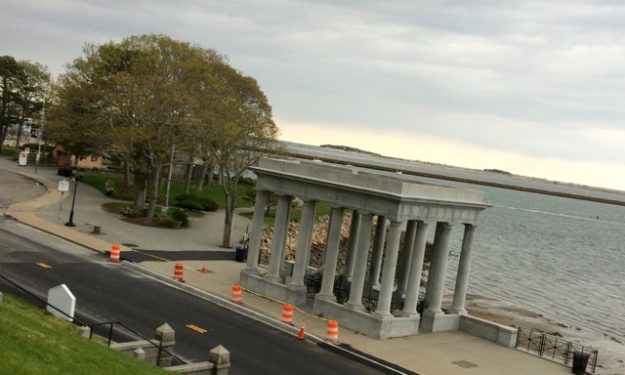
Itty bitty rock.
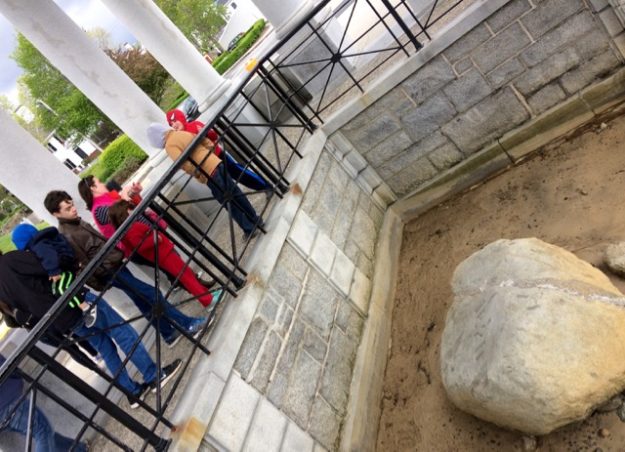
Okay, maybe it isn’t an itty bitty rock, but it does seem a little small to be such a famous rock, even in comparison to the boulders of Southwest Oklahoma. Nevertheless, it’s not the size that matters. It’s the history – or, rather, the legend – that counts. The two primary source texts in existence today (Of Plymouth Plantation and Mourt’s Relation) include no reference to the Pilgrims landing on a rock. The first references to Plymouth Rock came 100 years after the landing of the Pilgrim fathers. Even so, the history of the rock itself being dragged around town, broken, and then cemented back together is enough to earn it a monumental home of historical significance.
Speaking of monument, that brings me to the most profound part of our pilgrimage to Plymouth, the National Monument to the Forefathers
The National Monument to the Forefathers
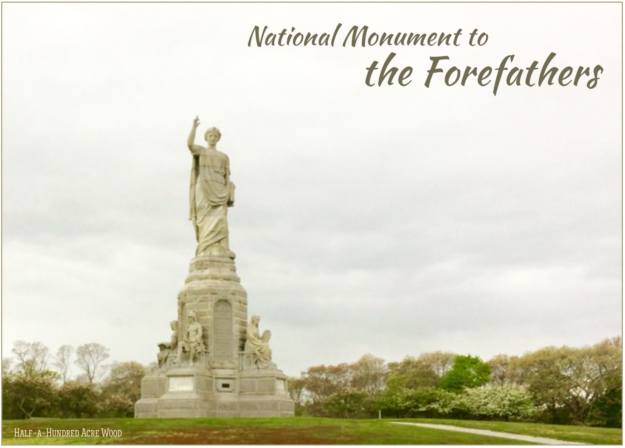
This 81-foot tall granite statue is tucked away off a random street in Plymouth. Had we not joined some beautiful friends who showed us around town (Thank you, Heatherly!), we likely would have never visited it. It truly is one of the best-kept secrets of New England – one we had first heard about a few years ago thanks to Kirk Cameron (in his documentary Monumental). Somehow we didn’t connect that the monument in Monumental was a monument we could actually visit during our trip to Plymouth.
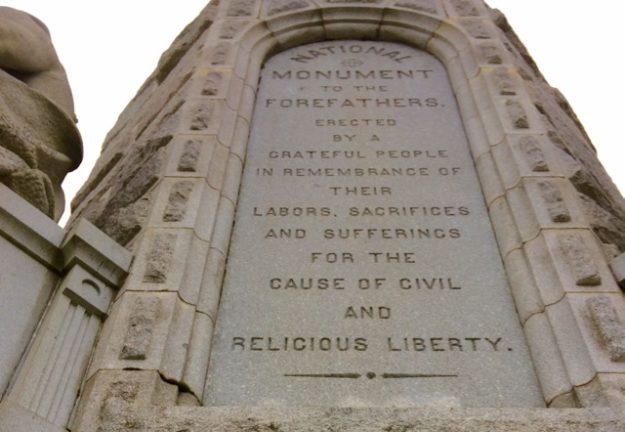
When we try to separate God from the history of our country, so many things just don’t make sense. But when you can piece together the reasons for the choices made – when you start to trace the events that compelled the Pilgrim forefathers to leave all they knew and start over in a new land, it’s an amazing story about the Pursuit of Happiness. This monument tells the story through allegorical figures representing morality…
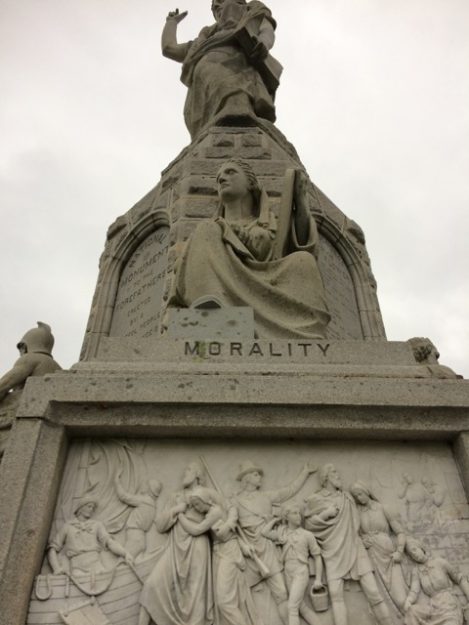
law…
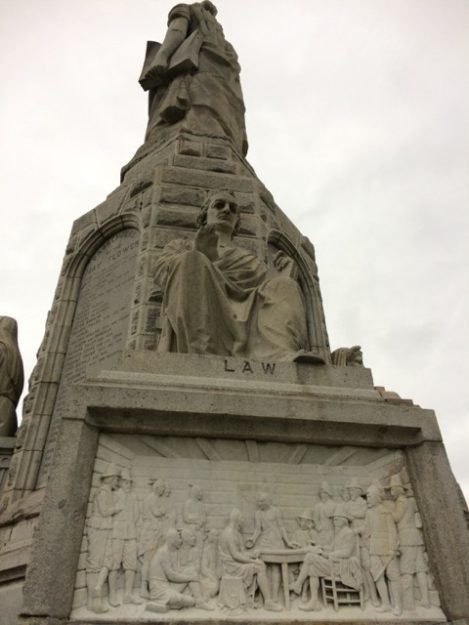
education…
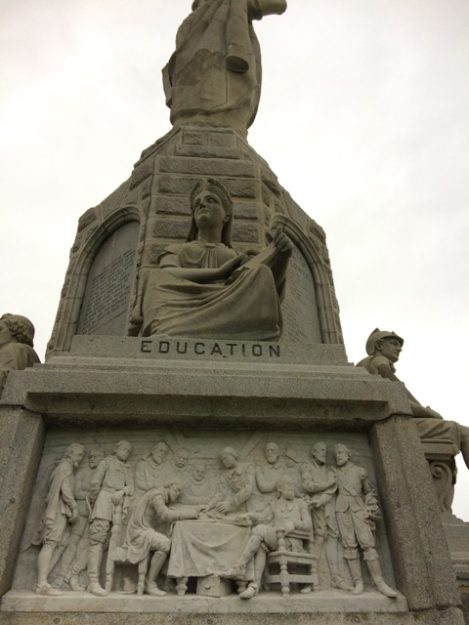
and liberty…
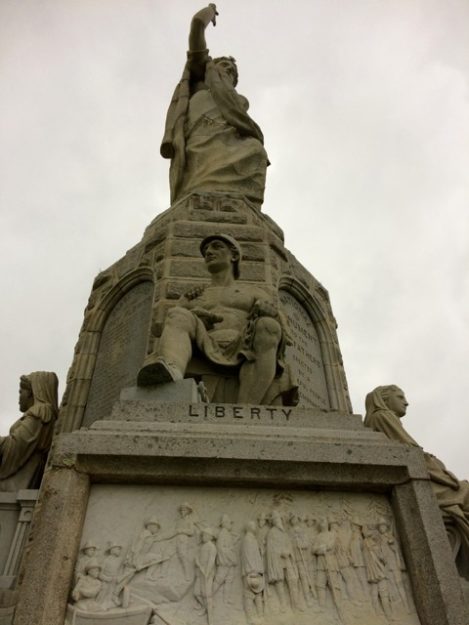
and how these all flowed from the faith (the topmost statue pointing to heaven with a Bible in her other hand) of this tiny band of sojourners.
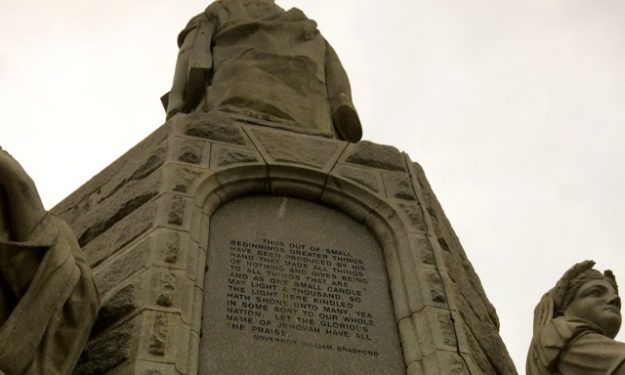
This video clip from the documentary Monumental, provides a fascinating overview of this monument and the history of the Pilgrims.
The monument is free to visit and open to the public year-round. You can also read the outstanding little book, Pilgrim Pursuit of Happiness.
Plymouth Lobster Crawl
Last but not least, we don’t want to forget to mention the Plymouth Lobster Crawl. Taking photos with all the different lobsters was Isaac’s favorite thing:
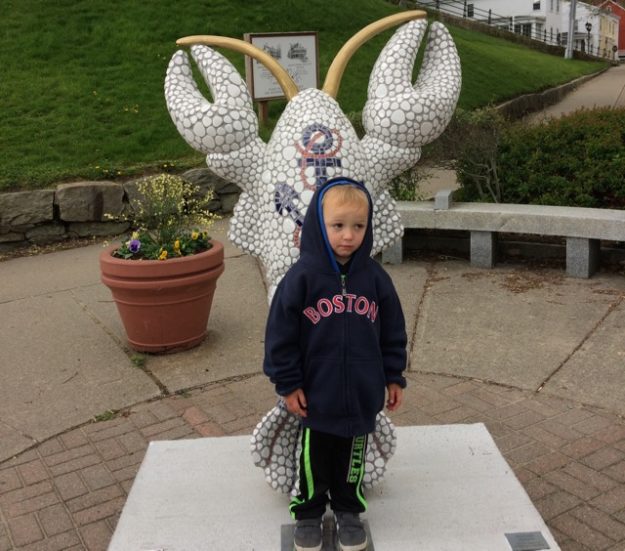
Okay, maybe not. But it was still fun to search for all the different Lobster works-of-art in Plymouth!
Note: There are several other things to see within walking distance of Pilgrim Memorial State Park (where Plymouth Rock is located). And… if you happen to find yourself in Plymouth, we enjoyed eating lunch at Wood’s Seafood.
Resources Referenced and Books to Read
Pilgrim: Pursuit of Happiness by Leo Martin. Great short chapter book providing an overview of the Pilgrims’ journey, along with an explanation of the National Monument to the Forefathers.
Monumental Historical documentary by Kirk Cameron. Fascinating!
The Pilgrims of Plimoth (Aladdin Picture Books). I love the early colonial language provided in this account, which also includes quotes from primary source texts. Also great to pull out again to re-read at Thanksgiving.
You Wouldn’t Want to Sail on the Mayflower!: A Trip That Took Entirely Too Long Once again, a favorite in our home. Fun way to learn about American colonial history!
The Boy Who Fell Off the Mayflower. A riveting account of the Mayflower journey, along with the Pilgrims’ early experiences in America, told from the point of view of John Howland, the boy who was rescued when he fell off the Mayflower during a storm.
Squanto and the Miracle of Thanksgiving. A wonderful book focusing on Squanto’s life and how he impacted the lives of the Pilgrims. Pair with the Pilgrims of Plimouth for both perspectives and pull it out again at Thanksgiving.






